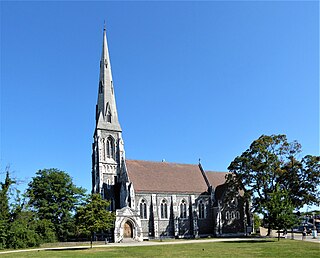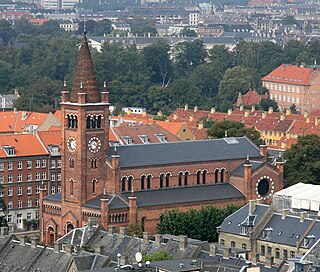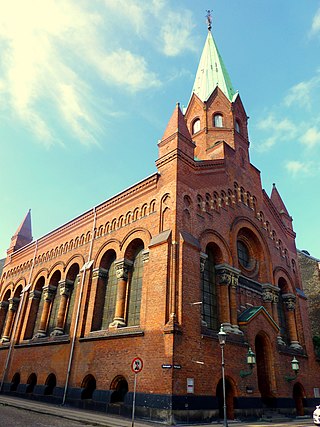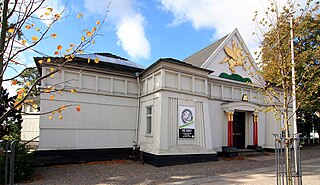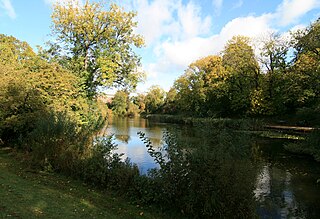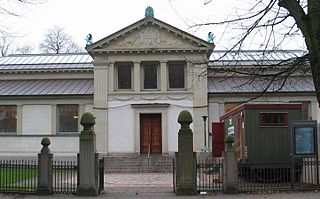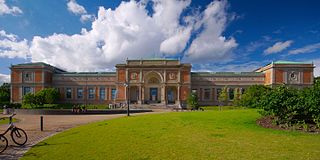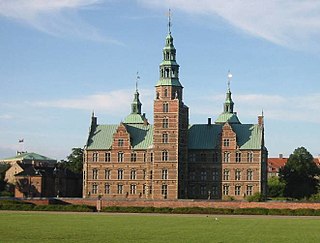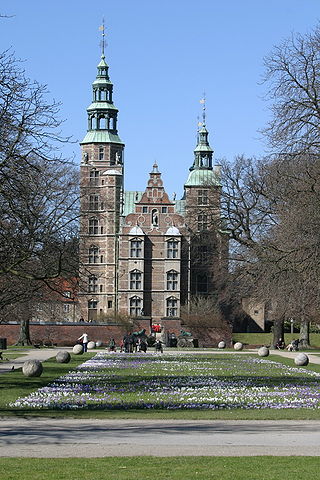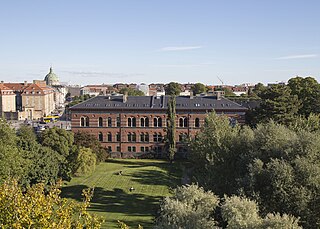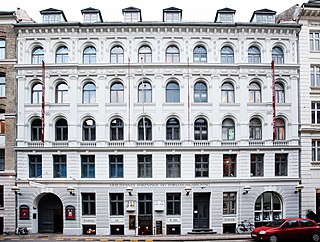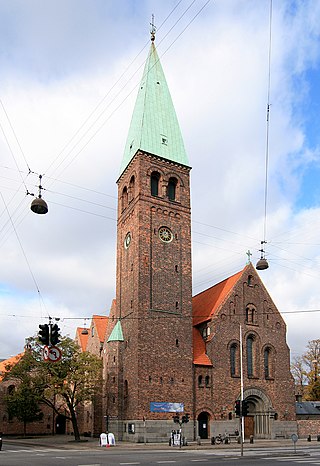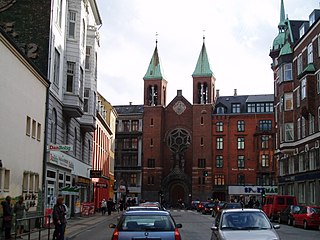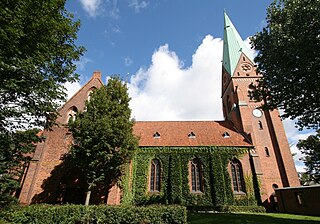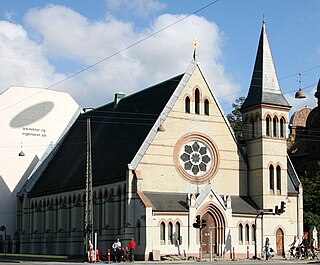Self-guided Sightseeing Tour #4 in Copenhagen, Denmark
Legend
Guided Free Walking Tours
Book free guided walking tours in Copenhagen.
Guided Sightseeing Tours
Book guided sightseeing tours and activities in Copenhagen.
Tour Facts
9.3 km
126 m
Experience Copenhagen in Denmark in a whole new way with our free self-guided sightseeing tour. This site not only offers you practical information and insider tips, but also a rich variety of activities and sights you shouldn't miss. Whether you love art and culture, want to explore historical sites or simply want to experience the vibrant atmosphere of a lively city - you'll find everything you need for your personal adventure here.
Activities in CopenhagenIndividual Sights in CopenhagenSight 1: Kastelsmøllen
The Kastelsmøllen in Copenhagen, built in 1847, is a Dutch windmill with a gallery. It consists of a brick-built sub-mill and an octagonal upper mill in wood clad with shavings. The wings have a stern for sails, and the mill is manually yaw with yaw beams and tail. The hat is bulbous and thatched with shavings. The mill was built as a grain mill and was in operation until 1903. The mill is functional and in operation a few times a year, and it celebrates the Citadel's birthday every year on 28 October.
Sight 2: Kastelskirken
The Citadel Church is located in the Kastellet in Copenhagen, the capital of Denmark. The church was originally reserved for the garrison of the castle, but in 1902 also incorporated a civil parish. The Citadel Church celebrated its 300th anniversary in 2004.
Sight 3: Kastellet
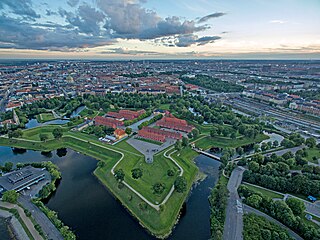
Kastellet is a citadel located in Copenhagen, Denmark. It is one of the best preserved fortresses in Northern Europe. It is constructed in the form of a pentagon with bastions at its corners. Kastellet was continuous with the ring of bastioned ramparts which used to encircle Copenhagen but of which only the ramparts of Christianshavn remain today.
Sight 4: Churchillparken
Churchillparken is a public park in Copenhagen, Denmark, occupying a tract of land between Kastellet, a 17th-century fortress, and the street Esplanaden. Located on the former esplanade which used to surround Kastellet, the area has a long history as a greenspace but received its current name in 1965 to commemorate Winston Churchill and the British assistance in the liberation of Denmark during World War II.
Sight 5: St Alban's Anglican Church
St. Alban's Church, locally often referred to simply as the English Church, is an Anglican church in Copenhagen, Denmark. It was built from 1885 to 1887 for the benefit of the growing English congregation in the city. Designed by Arthur Blomfield as a traditional English parish church in the Gothic Revival style, it is in a peaceful park setting at the end of Amaliegade in the northern part of the city centre, next to the citadel Kastellet and the Gefion Fountain and Langelinie.
Sight 6: Gefion Fountain

The Gefion Fountain is a large fountain on the harbour front in Copenhagen, Denmark. It features a large-scale group of oxen pulling a plow and being driven by the Norse goddess Gefjon. It is located in Nordre Toldbod area next to Kastellet and immediately south of Langelinie.
Sight 7: Frihedsmuseet
The Museum of Danish Resistance is located in Churchill Park in Copenhagen, close to Amalienborg, the Citadel and Langelinie. The museum's official name is "The Museum of Denmark's Freedom Struggle 1940-1945" and in English "The Museum of Danish Resistance during World War II".
Sight 8: Saint Paul's Church
St. Paul's Church is a Lutheran church in central Copenhagen, Denmark, also colloquially known as Nyboder's Church due to its location in the middle of the Nyboder area. It was designed by Johannes Emil Gnudtzmann and constructed from 1872 to 1877.
Sight 9: Jerusalem Church
Jerusalem's Church is the main church of the Methodist community in Denmark. The church building is located in Rigensgade, central Copenhagen. The church was founded by missionaries in 1859, while the current building was opened in 1915.
Sight 10: Eidsvoll Plads
Eidsvoll Plads is a square in the inner city of Copenhagen. The square was named on 17 May 2014 on the occasion of the 200th anniversary of Norway's constitution, which was adopted at Eidsvoll on 17 May 1814.
Sight 11: Den Frie Udstilling
Den Frie Udstilling is a Danish artists' association, founded in 1891 by artists in protest against the admission requirements for the Kunsthal Charlottenborg. Modeled on the Salon des Refusés, it is Denmark's oldest association of artists. Now located on Copenhagen's Oslo Plads next to Østerport Station, it works as an arts centre, continuing to exhibit works created and selected by contemporary artists rather than those chosen by cultural authorities.
Sight 12: Østre Anlæg
Østre Anlæg is a public park in Copenhagen. Once it was a part of the old city fortifications. The park was designed by landscape architect H.A. Flindt who also designed Ørstedsparken and Copenhagen Botanical Garden on the old fortification. The park lies between The National Art Museum at the southern end, and Oslo Plads and Østerport Station at the northern end. There are three lakes in this park, they used to be part of the moat system.
Sight 13: Hirschsprung Collection
The Hirschsprung Collection is an art museum located on Stockholmsgade in Copenhagen, Denmark. It is located in a parkland setting in Østre Anlæg, near the Danish National Gallery, and houses a large collection of Danish art from the 19th and early 20th century. The emphasis is on the Danish Golden Age, from 1800 to 1850, but also the Skagen Painters and other representatives of the Modern Breakthrough are well represented.
Sight 14: National Gallery of Art
The National Gallery of Denmark is the Danish national gallery, located in the centre of Copenhagen.
Sight 15: King's Garden
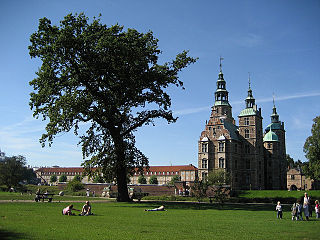
Rosenborg Castle Gardens is the oldest and most visited park in central Copenhagen, Denmark. Established in the early 17th century as the private gardens of King Christian IV's Rosenborg Castle, the park also contains several other historical buildings, including Rosenborg Barracks, home to the Royal Guards, as well as a high number of statues and monuments. The park also holds art exhibitions and other events such as concerts in the summer.
Sight 16: Rosenborg Castle
Rosenborg Castle is a renaissance castle located in Copenhagen, Denmark. The castle was originally built as a country summerhouse in 1606 and is an example of Christian IV's many architectural projects. It was built in the Dutch Renaissance style, typical of Danish buildings during this period, and has been expanded several times, finally evolving into its present condition by the year 1624. Architects Bertel Lange and Hans van Steenwinckel the Younger are associated with the structural planning of the castle.
Wikipedia: Rosenborg Castle (EN), Website, Facebook, Instagram
Sight 17: Kongernes Samling Rosenborg
The collection of the kings, formerly the chronological collection of the Danish kings, is a museum collection associated with the royal house, whose purpose is to tell Danish history elucidated from the kings. The museum has three departments, Rosenborg Castle, the Amalienborg Museum and Koldinghus. The establishment was done by Royal Resolution of May 4, 1833, where a Commission was set up "to a Chronological Scheme and the Set up of the Art Cases, etc., which were stored at Rosenborg Castle". Five years later you could open the door to the audience at Rosenborg. The museum decisively broke with contemporary exhibition principles. A number of interiors were created in chronological order, where the individual spaces told about the individual king and his contemporaries. The starting point was Rosenborg's builder, Christian 4. Since then, space was added to Christian 8., Frederik 7 and Christian 9. in 1994. Since January 1, 2021, Koldinghus has also been a branch of the Kings Collection.
Sight 18: Danish Natural History Museum
The Natural History Museum of Denmark is a natural history museum located in Copenhagen, Denmark. It is affiliated with the University of Copenhagen
Sight 19: Østervold
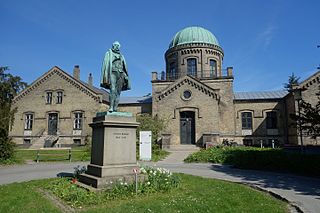
Østervold Observatory is a former astronomical observatory in Copenhagen, Denmark owned and operated by the University of Copenhagen. It opened in 1861 as a replacement for the university's old observatory at Rundetårn.
Sight 20: Botanical Garden
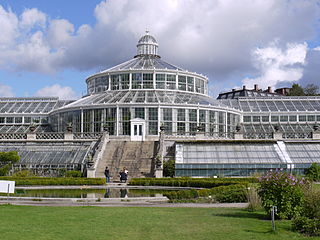
The University of Copenhagen Botanical Garden, usually referred to simply as Copenhagen Botanical Garden, is a botanical garden located in the centre of Copenhagen, Denmark. It covers an area of 10 hectares and is particularly noted for its extensive complex of historical glasshouses dating from 1874.
Sight 21: Worker's Museum
The Workers Museum is a historical museum in central Copenhagen, Denmark.
Sight 22: Sankt Andreas Kirke
St. Andrew's Church is a Lutheran church on Gothersgade in Copenhagen, Denmark, which was designed by the architect Martin Borch and built from 1897 to 1901. It is a parish church within the Danish National Church.
Sight 23: Sakramentskirken
The Sacrament Church is beautifully located on Nørrebrogade opposite Fælledvej and is the church of the Catholic congregation in Nørrebro in Copenhagen. It is consecrated to Saint Villehad of Denmark.
Sight 24: Folkets Park
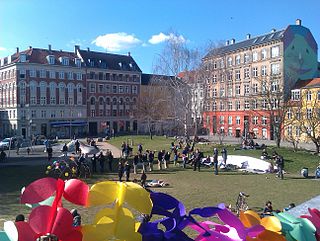
Folkets Park is a small park in Nørrebro in Copenhagen, situated between Griffenfeldsgade and Stengade.
Sight 25: Hellig Kors Kirke
The Holy Cross Church is a Church of Denmark parish church located at the corner of Kapelvej and Hans Tavsens Gade in the Nørrebro district of Copenhagen, Denmark. The church was built in 1887–1890 to a National Romantic design by Hermann Baagøe Storck.
Sight 26: Evangeliekirken
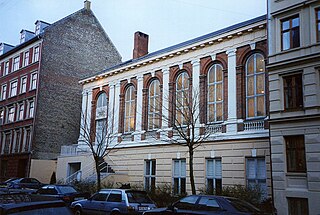
The Gospel Church is a church building at Worsaaesvej 5, Frederiksberg, which belongs to the Gospel Assembly, which is part of the Pentecostal Church.
Sight 27: Druknestenen
The Drowning Stone is a granite memorial stone on Åboulevarden in Copenhagen, which has been erected to commemorate the accident on the night of 27 November 1812, when six people were driving in the Ladegårdsåen river. Sisters-in-law Marie Henriques and Lise Magnus drowned when they, along with four others, drove into the river in the carriage. The company had attended the wedding of wholesaler Peter Mariboe at the property Rolighed, today with the address Rolighedsvej 21 in Frederiksberg.
Sight 28: Betlehemskirken

Bethlehem Church is a church in the Nørrebro district of Copenhagen, Denmark, located on Åboulevard, close to Peblinge Lake and the municipal border with Frederiksberg. Peder Vilhelm Jensen-Klint made the first sketches for the church but after his death it was completed by his son, Kaare Klint, and built from 1935 to 1937. Its style is remniscient of Grundtvig's Church, Jensen Klint's most famous work, which was also completed posthumously by Kaare Klint, although on a much smaller scale.
Sight 29: Katolsk Apostolisk Kirke
The Catholic Apostolic Church on the corner of Gyldenløvesgade and Nørre Søgade is a church in Copenhagen belonging to the Catholic Apostolic Parish. The church has not been used for years and may be demolished.
Share
Disclaimer Please be aware of your surroundings and do not enter private property. We are not liable for any damages that occur during the tours.
GPX-Download For navigation apps and GPS devices you can download the tour as a GPX file.



